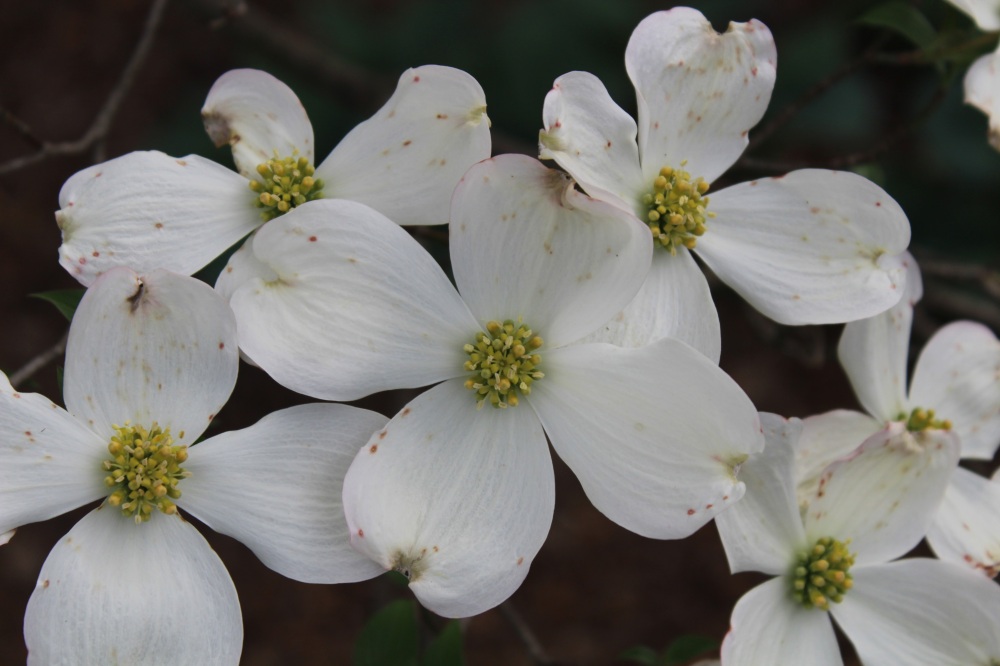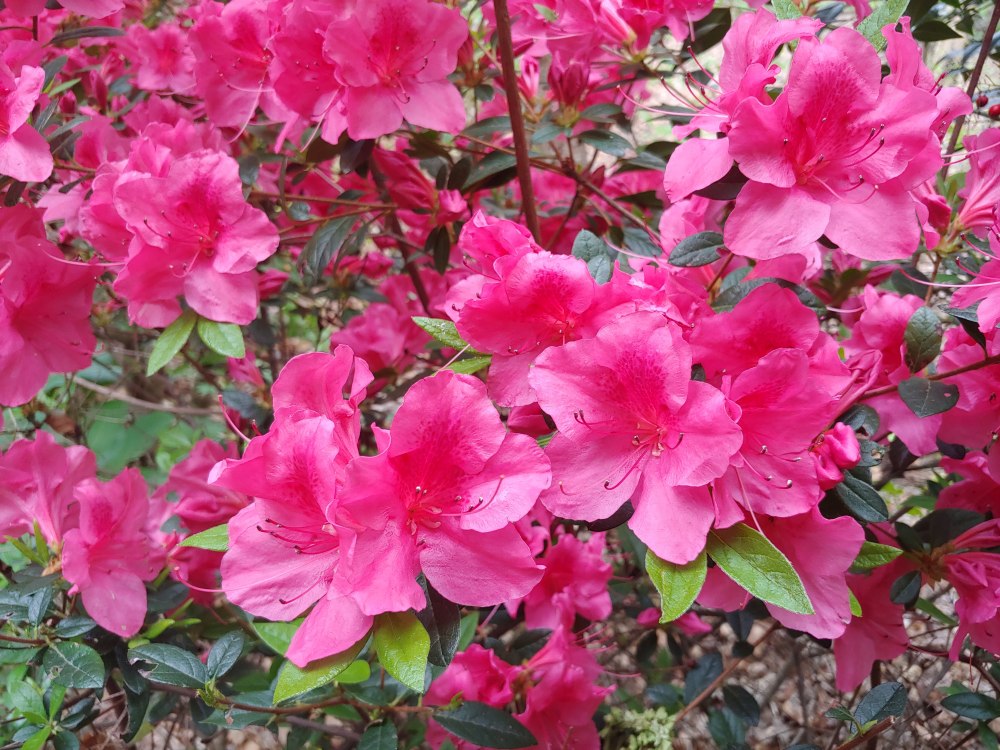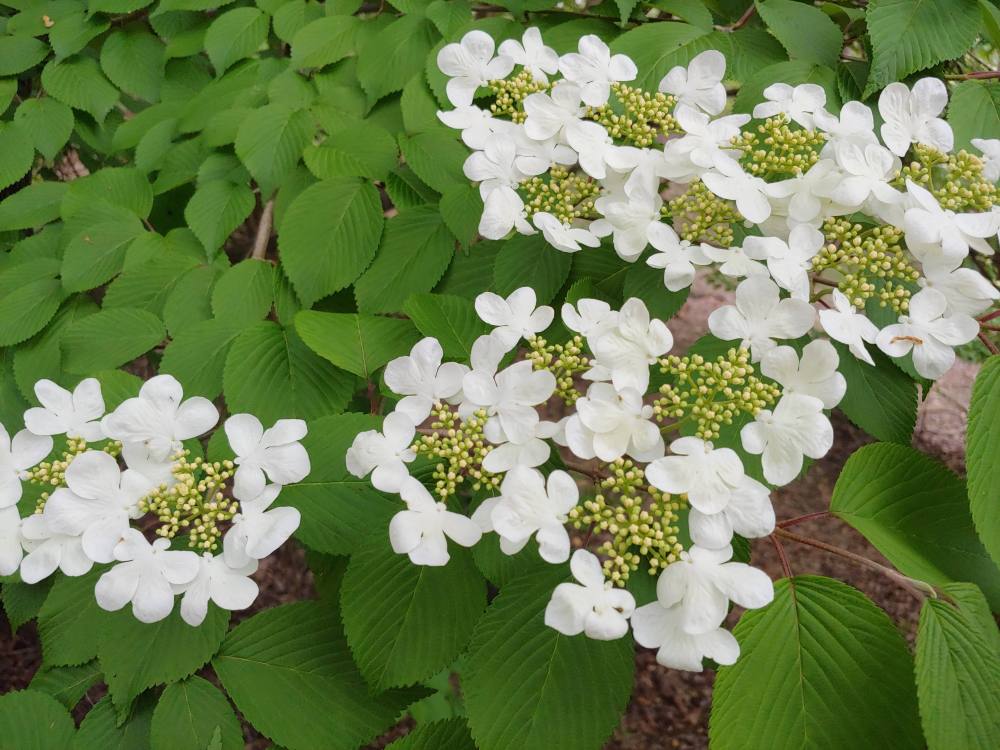With cool and sometimes cold temperatures through much of April, blooms remain on native dogwoods (Cornus florida, below) that typically would have faded a week or two earlier. Redbuds, that began to flower a day or two earlier than dogwoods, are past bloom, and are beginning to leaf. Dogwood crosses (such as Cornus ‘Rutgan’ Stellar Pink) are not yet colorful, but flowers are developing quickly, with Chinese dogwoods (Cornus kousa) just behind.

Nobody’s complaining, and why should they since the spring flowering season continues to be splendid? No doubt, there’s rarely an exception when spring blooms do not please, but occasionally an ill timed freeze causes distress. Not this year, though a mild freeze or two have done minor damage.

While many flowers were early following a very mild winter, the schedule in April has gotten back on track (as usual) with evergreen azaleas (above) flowering late in the month, and the wonderful deciduous azaleas (below) beginning to show their first color. Undoubtedly, I’ll rave another time or two while these brightly colored and fragrant azaleas are flowering, and why they’re not more commonly planted is a mystery.

I notice today that red, orange, and yellow flowered azaleas are nearly as tall as the redbud they were planted next to, and while the scale is off when the understory shrub is as tall as the tree, the branches intertwine and to my thinking this works perfectly. Years after this initial planting, a range of colors of deciduous azaleas were planted close by, and while most are only a few feet tall, I anxiously await the day when azaleas in the area are fully grown.

A group of three Maresi viburnum (Viburnum plicatum f. tomentosum ‘Mariesii’, above) has become overly shaded over the years, but branches climb though a neighboring serviceberry (Amelanchier), reaching for sunlight. Flowers are more scattered than if the viburnum was in more sun, but there are enough that it is not disappointing, with flowering branches arching over one of the garden’s ponds.
I have a 30 yr old JM that appears to be totally dead. no leaves…old buds breaking off. no green under bark. zone 7 vienna va. it was not fertilzer or pruned and perfectly healthy last year. ever see a complete and total JM death of established tree like this? nothing changed underneath it…perennials all healthy and thriving. so sad.
I lost a variegated leaf ‘Oridono nishiki’ Japanese maple two years ago, with hardly any warning. While Japanese maples are typically very tough, we can’t see beneath the bark or to the roots to know everything that’s going on. My concern in recent years has been the greatly increased rainfall in 2018 into spring 2019, and possibly the persistent rain we’re seeing over the past month. The constant moisture is not good for roots, and once damaged the effect can be a slow fade, or it can be as simple as not leafing out the next spring.
Unfortunately these wet conditions promote verticillium wilt
I got the impression that deciduous azaleas would have been more popular if we could have provided more and better quality material. They are not as easy to grow as the more popular rhododendrons. Our clients purchased most of what we could grow, but we did not grow many.
However, now that factory growers are providing material that is much more visually appealing (though of inferior quality), they remain unpopular. I can not figure it out either.
I understand the common appeal of azaleas and rhododendron as evergreens with periodic flowers, but we plant many deciduous shrubs and very few deciduous azaleas.
Maybe there will be interest in deciduous azaleas if someone develops a encore-type reblooming deciduous variety?
There are not many that are either evergreen or deciduous. If there were such a thing, evergreen lilac might have been more popular than the deciduous lilacs that we are familiar with now.